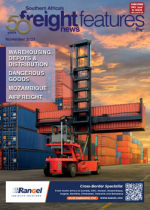In an effort to curb the rising incidents and accidents related to the transportation of dangerous goods, industry experts are calling for more training and safety protocols for transporters.“Without proper training we allow people to handle a 56-ton rig on public roads with potentially deadly cargo,” said James Buys, managing director at SAERC. “This will surely result in a disaster when things go wrong. Training should be a key focus for any driver, loading/unloading personnel.”He said training was still lacking in South Africa. “Training requirements are not aligned with standards, and in many instances, even national standards are currently out of date. There is currently a working group with the Department of Transport (DoT) whose purpose is to align the standards with international regulations and then to ensure that the training requirements are aligned with this.”According to Buys, training needs to be extended to the public as well. “The public should be aware that if they enter an area where a truck with dangerous goods has been involved in an incident or accident they can and most probably will be harmed. Dangerous goods are not something to take lightly. In October, a working group was established to work with the DoT to raise more awareness around dangerous goods.”Buys said it was essential to have management standards compulsory for all transporters to adhere to, such as SQ AS – a requirement for the transport and storage of classified dangerous goods – to ensure sound business practices and standards and to avoid more incidents and accidents.“Furthermore, we need to have more facilities for drivers to safely overnight and rest,” he told Freight News. “Dangerous goods vehicles waiting at borders also pose a real risk when things go wrong as there is no segregation. In some instances, drivers are sitting under LPG tankers and fuel tankers with their gas stoves and cooking. This is a clear example of the lack of understanding and awareness of risks, which points back to the lack of training.”Buys said the transport space had changed a lot over the past few years. “A large number of new operators have entered the market. However, not all of these operators are large companies; a number of them are small companies with one or two vehicles. These small operators do not have the ability or the funds to implement proper management systems to ensure safe transportation of goods. The lack of management systems results in lack of control over driver hours, maintenance, and training, to name a few, which is essential for safe transportation.”

